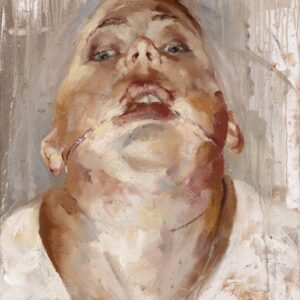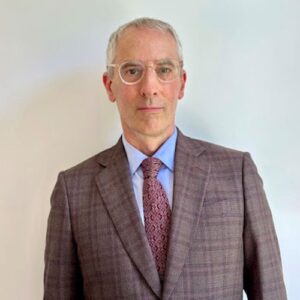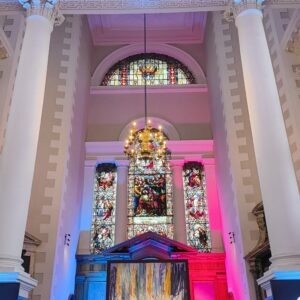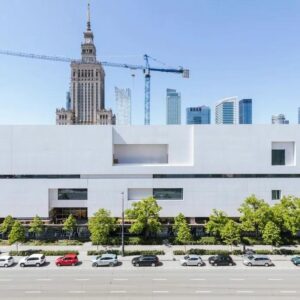
Inés Maestre is a visual artist that came into fine art through illustration and high fashion. She was formally trained as a print designer and continues to work and collaborate with fashion brands. Her interest lies in human relationships and how people express and transform themselves. Her work can feature a compilation of images that have been sourced from various virtual and physical archives and have been meticulously arranged to highlight dualities such as object and desire, highs and lows, good and bad, and of course love and hate.

Art and fashion have long been intertwined. Designers frequently look to the fine arts for inspiration, and many luxury collectibles have historical importance and are valued for their rarity. Maestre’s work combines various media such as photography, collage, digital painting, oil painting, and airbrushing. Her strengths in fashion design and interest in fine arts allow her to work between analogue and digital production. The platforms where her work is displayed in the media and in physical spaces allow her work to reach wider and further places outside of a typical arts institution.
Maestre works with symbolism and pop culture as tools to communicate relationships and emotions to further connect to viewers by illustrating and reminding audiences how popular icons thrive as well as struggle. Maestre uses these icons and their backstories to inform her pictorial narratives, which provide the reminder that a person is not alone in their highs and lows.
Inés Maestre grew up in Madrid; she received a degree in fashion design from the Istituto Europeo di Design and an MA in fine arts from the École cantonale d’art de Lausanne. Maestre is currently based between New York City, Lausanne, and Madrid. Her work has been featured in Esquire, GQ, Condé Nast, Harper’s Bazaar, Heineken, i-D, Vanity Fair, and Vogue. She is represented by the Mushroom Company and Artist & Agent.

Phillip Edward Spradley: The cultural references in your artwork feature notable and famous female figures. Can you share what it is that draws you to pop culture icons and their creativity?
Inés Maestre: I’m drawn to how pop figures represent emotions. When we see a pop icon, we instantly associate them with a certain vibe—like a rebellious edge with Christina Aguilera in “Stripped,” or something more melancholic and introspective, like Britney in “Lucky.” It’s a straightforward way of communicating a feeling. Pop stars are often boxed into certain roles, and today, they’re almost like modern-day saints or icons that we admire and look up to. So, to me, it makes sense to pull them out of their typical context and depict them as figures to be revered.

There are many different types of animals featured in your paintings: cats, doves, spiders, and foxes. Are you interested in classical animal symbolism in art? Are you creating your own allegorical meaning?
Absolutely. I’m really fascinated by symbolism and how images translate into deeper meanings. It’s such a powerful tool, almost embedded in our subconscious. Often, we don’t even need to fully understand the meaning behind a symbol or action—just seeing it, whether it’s an animal or an image, can resonate with us or evoke something without us knowing exactly why.

How do you balance the conceptual and aesthetic aspects of your work to create pieces that are both artistically innovative and wearable?
Creating something visually appealing hold a lot of power. It’s a valuable way that draws people in, but beyond that first layer of beauty, there’s so much more for those who take a closer look. Beneath the surface, there’s often hidden depth, unexpected meanings, or even a hint of ugliness that reveals itself to those willing to explore beyond the obvious.

In addition to reaching a wider audience through magazine covers and fashion media, what do you find exhilarating and continually fascinating about the world of fashion and the production behind it?
I’m drawn to the world of fashion and its production because it offers a different, more accessible form of creativity compared to the often insular nature of the art world. Fashion allows for artistic expression in a way that reaches a wider audience, breaking through the barriers that can sometimes make traditional art feel exclusive. For me, democratizing art is essential—especially in the work I create. I want it to be something people can engage with, connect to, and access, no matter where they’re coming from.
Can you discuss a project or a collection that was particularly significant for you and why?
It’s hard to pick just one, but the first thing that comes to mind is the work I do as a duo with my dear friend and sister, Sara Bastai. We found a beautiful way to collaborate, with her focusing on photography and me on digital painting. It was a truly enriching period for both of us—it opened doors and led us to places we never could have reached on our own.

You have collaborated with many designers. Can you share a particular challenge you faced when merging fine art with fashion and how you overcame it?
I don’t know if it could be considered merging fine art with fashion, but I found working full-time in fashion incredibly challenging. I have a deep admiration for those who thrive in that world, but personally, it made me completely miserable. I have so much respect for people who can embrace that lifestyle and find joy in it, but it just wasn’t for me.
Despite some breakthroughs, the fashion industry remains fairly homogeneous. The diversity of models is now a subject of regular study, but less is known about other participants in the fashion industry. In your years of working, have you seen change, and have you and your work been affected?
I believe we’re slowly starting to see real change. It feels like we’re moving toward a better world, with newer generations being much more aware and committed to inclusivity. I’m hopeful that over time, they will redefine what’s considered “standard.” At the same time, I recognize that some of these changes aren’t entirely genuine—sometimes they’re driven by marketing or a desire to fit in with the “woke” crowd. But even if the initial motivation isn’t sincere, the fact that these shifts are happening could still lead to more honest, lasting change in the future.
How do you envision the future of fashion design evolving, especially with the ongoing influence of fine art?
I think all creative disciplines are becoming increasingly intertwined. I’d like to believe that as this continues, the barriers and boundaries between them will gradually fade, along with the stigmas that have traditionally come with them.

What are you focused or interested in at the movement?
Right now in survival. I just moved to New York, and now I’ve got a whole new life to build—haha!
To learn more about Inés Maestre, follow her on Instagram @inesmaestre_ and visit her website at inesmaestre.com.




